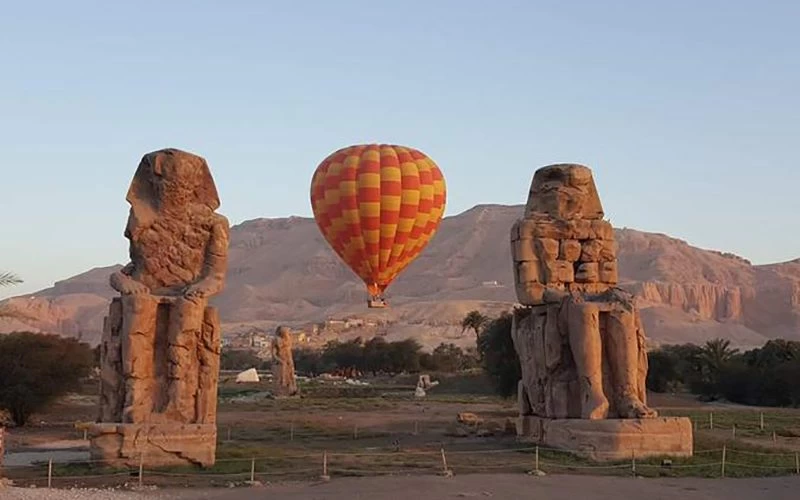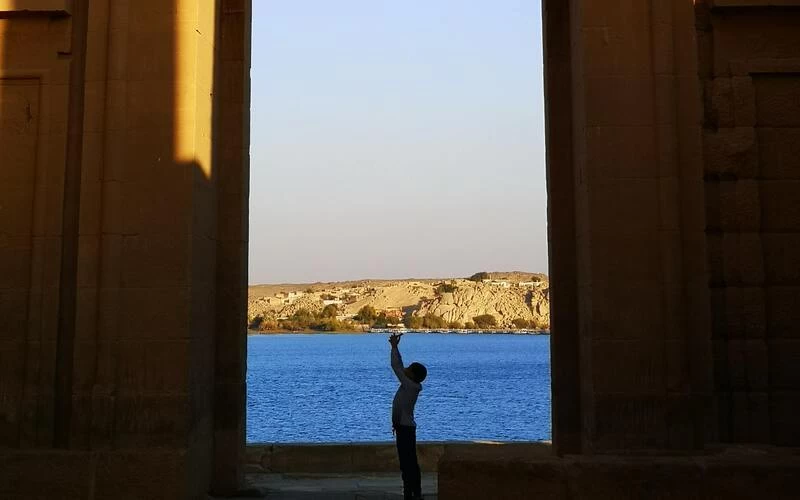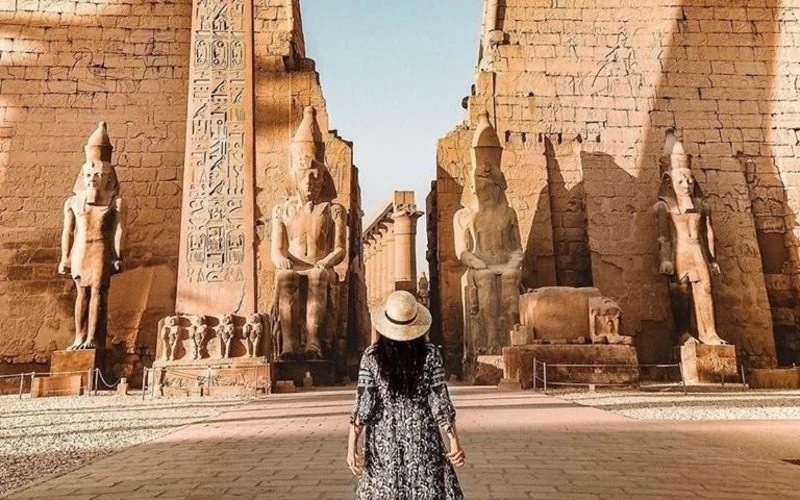Una guida completa alle migliori cose da fare ad Assuan
Indice
Stand in Awe of Abu Simbel's Grandeur
Unveil the Secrets of Elephantine Island
Step Back in Time at Edfu's Sacred Temple
Explore Ancient Lives at Tombs of the Nobles
Uncover the Mysteries of the Unfinished Obelisk
Immerse at the Serenity of Philae Temple
Sail the Nile in a Traditional Felucca Adventure
Discover Dual Deities at Kom Ombo Temple
Marvel at the Engineering Feat of Aswan High Dam
Embrace the Vibrant Culture in the Nubian City
Discover Spiritual Serenity at St. Simeon Monastery
Witness the Magic of Aswan's Sunset Beauty
Journey Through History at Wadi Al-Subua
Explore the Hidden Gem of Kalabsha Temple
Cruise the Nile: A Journey Between Luxor and Aswan
Shop for Treasures in Aswan's Vibrant Souq
Discover the Ancient Quarries at Gebel El-Silsila
Stay in Elegance at the Iconic Old Cataract Hotel
Admire the Serenity of Aga Khan Mausoleum
Dive Into Nubian Heritage at the Nubian Museum
Una guida completa alle migliori cose da fare ad Assuan
Aswan, a gem of southern Egypt, offers a perfect blend of history, culture, and adventure. Known for its breathtaking Nile views and rich historical landmarks, this city is a gateway to some of Egypt’s most treasured sites. From the awe-inspiring Abu Simbel to the serene Elephantine Island, the best things to do in Aswan include exploring ancient temples, experiencing vibrant Nubian culture, and marveling at modern achievements like the High Dam. Whether you're sailing the Nile on a felucca or discovering hidden gems, Aswan promises unique experiences for every traveler. Discover the top attractions with Sun Pyramids Tours and immerse yourself in the wonders of this incredible destination.
Stand in Awe of Abu Simbel's Grandeur

No visit to Aswan is complete without experiencing the awe-inspiring Abu Simbel Temple, one of the most legendary activities to do in Aswan. Carved into a mountainside by Ramses II (also known as Ozymandias), this monumental structure immortalizes his legacy and his victory at the Battle of Kadesh in 1274 BC, leading to the world’s first peace treaty. The temple complex consists of two grand temples: the larger one dedicated to Ramses II and the gods Ra-Harakhty, Ptah, and Amun, and a smaller temple dedicated to his beloved queen, Nefertari. The four colossal statues of Ramses at the entrance stand 20 meters tall and leave visitors speechless with their sheer size and detail.
Inside, intricately carved scenes depict the reign of Ramses II and important religious ceremonies. One of the temple's most fascinating features is its solar alignment—twice a year, on February 22 and October 22, the sun’s rays illuminate the inner sanctuary, lighting up the statues of the gods. This engineering marvel was even relocated in the 1960s to save it from rising waters after the construction of the Aswan High Dam. Join Sun Pyramids Tours to explore Abu Simbel on our itinerary and witness the grandeur of this timeless wonder.
Unveil the Secrets of Elephantine Island

Elephantine Island, located in the heart of the Nile, is one of the most captivating sites and among the top activities to do in Aswan. Situated at the southern border of Upper Egypt and Lower Nubia, this ancient treasure was strategically significant in antiquity. Its historical importance is reflected in the incredible archaeological sites found here, including the Temple of Khnum, dedicated to the god associated with the Nile’s flooding and the creation of life. Visitors can also explore the ancient Nilometer, used to measure the river’s water levels, and discover ruins that date back over 3,000 years.
The Aswan Museum on the island showcases fascinating artifacts from ongoing archaeological excavations, offering a deeper insight into the island’s past. In addition to its rich history, the island provides easy access to the Nubian Villages and nearby Kitchener Island’s lush Botanical Garden, making it a must-see for anyone visiting Aswan.
Step Back in Time at Edfu's Sacred Temple

One of the best things to do in Aswan is to visit the Edfu Temple, dedicated to Horus, the falcon god of victory. Built between 237 BC and 57 BC during the Ptolemaic period, this magnificent temple was constructed on the spot where the mythical battle between Horus and Set occurred, as told in the Osiris myth. The temple celebrates Horus' victory over Set, making it a symbol of triumph and divine power.
Edfu is one of the last temples constructed in ancient Egypt and is also one of the most well-preserved. Visitors can explore the grand courtyard, towering pylons, and beautifully adorned hypostyle hall, each covered with intricate carvings and depictions of ancient rituals. The temple’s layout, featuring a sanctuary, impressive gateways, and a vast enclosure, reflects the grandeur of Ptolemaic architecture, giving insight into the religious beliefs and ceremonies that were central to ancient Egyptian life.
Explore Ancient Lives at Tombs of the Nobles

The Tombs of the Nobles in Aswan offer an unparalleled glimpse into the lives of the ancient elite, making them one of the top Aswan things to do. These rock-cut tombs served as the final resting places for nobles, officials, and governors who protected Egypt’s southern gates during the Old Kingdom (2686–2181 BC). Inside, visitors can explore tomb complexes adorned with vibrant wall paintings, hieroglyphics, and intricate decorations that vividly depict everyday life, religious rituals, and important ceremonies. These artistic elements provide fascinating insights into the beliefs, customs, and daily routines of the elite class in ancient Aswan.
The tombs are located near other significant landmarks like the Mausoleum of Aga Khan and the Monastery of St. Simeon, enhancing their appeal. The rock-cut architecture of these burial chambers is carved directly into natural rock formations, reflecting the traditional Egyptian mortuary practices and the spiritual beliefs surrounding the afterlife. Exploring the Tombs of the Nobles gives travelers a deeper understanding of ancient Egyptian culture across different eras, from the Old to the New Kingdom.
Uncover the Mysteries of the Unfinished Obelisk

The Unfinished Obelisk is one of the most remarkable Aswan things to do, providing visitors with a unique insight into ancient Egyptian stonework and quarrying techniques. Located in the northern region of Aswan, this massive monument was abandoned during its construction, likely due to a crack in the granite. Had it been completed, the obelisk would have stood at 42 meters tall and weighed approximately 1,200 tons, making it the largest obelisk ever carved in ancient Egypt. The site offers a fascinating look at the immense skill and precision required by ancient Egyptian craftsmen, who worked with simple tools to create these monumental structures.
Walking through the quarry, you can still see the marks left by the workers and the techniques used to separate such massive blocks from the bedrock. The Unfinished Obelisk is a testament to the ambitions and technological capabilities of the ancient Egyptians, giving visitors a deeper appreciation of their craftsmanship and ingenuity. It also sheds light on the challenges faced by these artisans, as the monument's incomplete state tells the story of the difficulties encountered during construction.
Immerse at the Serenity of Philae Temple

The Philae Temple, dedicated to the goddess Isis, is a serene and enchanting site nestled on an island in the Nile. Constructed between 380 BC and 362 BC by King Ptolemy II and later expanded by various rulers, the temple is steeped in mythological significance. It was primarily dedicated to Isis, the goddess of motherhood, magic, and protection, and the story of the Osiris myth is depicted on its walls. This famous tale recounts the resurrection of Osiris, Isis's husband, and showcases the role she played in bringing him back to life.
The temple complex, featuring structures like a smaller temple dedicated to Hathor and an enclosed birth house, is adorned with intricate carvings and hieroglyphs depicting religious and mythological scenes. A UNESCO World Heritage site, Philae is renowned for its stunning reliefs and the magical Sound and Light Show, where storytelling, music, and illuminated structures bring the temple’s history to life. Book your visit to Philae Temple today with Sun Pyramids Tours via this itinerary and experience its beauty and serenity firsthand.
Sail the Nile in a Traditional Felucca Adventure

A Felucca ride on the Nile is one of the most peaceful and authentic experiences in Aswan. These traditional sailboats glide gently across the river, offering a tranquil escape from the hustle and bustle of daily life. As you sail, you'll be surrounded by breathtaking views of ancient temples, lush islands, and the stunning landscape of the Nile. Whether you're catching the vibrant colors of the sunrise or the soft glow of the sunset, the serenity of the river will captivate you. The experience provides a deep connection to Egypt’s ancient past, as the Nile has been a lifeline for civilizations for thousands of years. The soft breeze and calm waters create an atmosphere of relaxation, allowing you to fully immerse yourself in the beauty of Aswan. As you sail, local guides may share stories about the history and culture of the region, adding a layer of richness to this unforgettable journey. Whether for a brief sail or a longer journey, a Felucca ride is a must when visiting Aswan.
Discover Dual Deities at Kom Ombo Temple

One of the best things to do in Aswan is to visit the unique Kom Ombo Temple, perched along the Nile’s edge. Constructed during the Greco-Roman period between 205 BC and 180 BC under Ptolemy V, this temple stands out due to its rare double design, which is symmetrically divided into two identical sections. One half is dedicated to Sobek, the crocodile god of fertility and the Nile, while the other is devoted to Horus, the elder. The temple’s symmetrical layout, with twin halls, sanctuaries, and courts, reflects the equal reverence given to both deities.
Visitors can admire the intricate carvings and learn about the medical practices of ancient Egypt through displays of surgical instruments found at the site. Kom Ombo Temple also provides valuable insight into the astronomical and mythological knowledge of the era. As you explore, you’ll be immersed in the rich history and spiritual significance of the temple, making it a must-see stop on any Nile cruise through Upper Egypt.
Marvel at the Engineering Feat of Aswan High Dam

One of the most significant Aswan things to do is visit the Aswan High Dam, an engineering marvel of the 20th century. Built in the 1960s as a joint project between Egypt and the Soviet Union, the dam was designed by the Moscow Hydro Project Institute to control the annual Nile floods, store water for irrigation, and generate hydroelectric power. The dam was a game-changer for Egypt’s economy, providing a steady supply of water and electricity and playing a crucial role in modernizing the country’s infrastructure.
Standing at the dam, visitors can take in breathtaking views of Lake Nasser, one of the world’s largest man-made lakes, created as a result of the dam’s construction. The Aswan High Dam not only represents a pivotal moment in Egypt’s development but also offers a fascinating glimpse into the country's transition into the industrial age. Visitors will learn how this colossal structure transformed Egypt’s agricultural landscape, ensuring water security and shaping the future of the nation.
Embrace the Vibrant Culture in the Nubian City

One of the best things to do in Aswan is to explore the majestic Nubian City, an enchanting realm filled with vibrant culture, unique architecture, and natural beauty. Located along the Nile between Aswan and Khartoum, Nubia boasts a history that dates back to 2000 BCE, making it a cultural treasure trove. Visitors will be immersed in the colorful traditions, languages, and artistry that have been passed down through generations. The Nubian villages, like Gharb Soheil, known for its traditional houses and rich cultural heritage, and Seheil Island, home to a distinct Nubian community, offer an authentic glimpse into Nubian life.
As you stroll through these villages, you'll encounter mesmerizing murals, handmade crafts, and the warmth of friendly locals who are eager to share their history and stories. The stunning setting by the Nile, combined with the vibrant atmosphere of these communities, creates a memorable experience that connects visitors to the ancient yet living culture of Nubia. Whether taking a boat tour or wandering through the villages, the Nubian City is a must-see destination for anyone visiting Aswan.
Discover Spiritual Serenity at St. Simeon Monastery

Among the top Aswan things to do, a visit to the Monastery of St. Simeon is a journey into Egypt’s ancient Christian history. Built in the 7th century, this vast Coptic architectural complex is the largest of its kind in Egypt and sits deep in the desert, just 700 meters from the west bank of the Nile, opposite Elephantine Island. Originally established by the local saint Anba Hedra, who renounced worldly life on the day of his wedding, the monastery became a spiritual retreat for monks journeying into Nubia. Dedicated to the hermit St. Simeon, who lived a life of asceticism, the monastery is a testament to early Christian devotion.
The well-preserved ruins offer a fascinating glimpse into the religious life of the time, showcasing intricate Coptic architecture that includes spacious courtyards, small chapels, and monastic cells. Though abandoned in the 13th century, likely due to the decline of the Christian community in the region, the site’s remnants have been carefully preserved, offering visitors an extraordinary experience. The monastery’s elevated location provides breathtaking views over the surrounding desert and the Nile River, adding to the sense of peace and spirituality that pervades the site.
Witness the Magic of Aswan’s Sunset Beauty

One of the most breathtaking Aswan things to do is witness the magical sunsets that cast a golden glow over the city. As the sun dips behind the horizon, it creates a mesmerizing display of fiery hues over the Nile and desert. Whether you're aboard a traditional Felucca, standing by the riverbank, or enjoying the view from a rooftop, the serene beauty of the sunset in Aswan is an unforgettable experience. The vibrant colors reflect off the water and surrounding landscapes, making the temples, such as Abu Simbel, and the vast desert glow in warm tones as if bidding farewell to the day.
Even a desert safari on camelback or a quad ride to the Nubian villages can be enhanced by the sight of the setting sun. The captivating blend of natural beauty and historical grandeur during sunset provides a peaceful moment that connects you to the essence of Aswan. This daily spectacle is a perfect way to end your day and create lasting memories of Egypt's timeless southern gem.
Journey Through History at Wadi Al-Subua

One of the most fascinating Aswan things to do is explore Wadi Al-Subua, also known as the "Valley of the Lions," constructed by Ramses the Great in lower Nubia. This remote site, located near Lake Nasser, is home to temples built by Ramses II, originally dedicated to Horus and later altered to honor Amun. The temple features a rock-cut sanctuary, a brick-built pylon, a court, and a hall adorned with remarkable wall paintings. It stands as a testament to the architectural brilliance of Ramses the Great, offering visitors a peaceful escape into Egypt’s ancient past.
Near Wadi Al-Subua is the Temple of Dakka, built during the reigns of Ptolemy II and Ptolemy III in the 3rd century BCE, and dedicated to the gods Thoth, the god of wisdom, and Horus, the falcon-headed god. The area also hosts the relocated Monastery of the Holy Virgin Mary, a Coptic Christian site that includes a church, monks' cells, and a cemetery. Like Abu Simbel and the Philae Temple, Wadi Al-Subua’s monuments were relocated by UNESCO in the 1960s to preserve them from the rising waters of Lake Nasser, offering visitors a quiet yet rich historical adventure surrounded by the desert’s tranquility.
Explore the Hidden Gem of Kalabsha Temple

One of the most fascinating temples near Lake Nasser is the Temple of Kalabsha, built during the Roman period between 30 BCE and 14 CE, under the reign of Augustus, and dedicated to the Nubian sun god, Mandulis (Merul). This hidden gem, located 50 km south of Aswan, is a stunning example of ancient Egyptian architecture in Nubia, blending Roman and Egyptian styles. The temple features an entrance porch, a hypostyle hall, and a sanctuary, all adorned with detailed reliefs and carvings depicting gods such as Mandulis, Horus, and Osiris.
Roman emperors like Augustus and Tiberius also appear in the reliefs, showcasing the cultural fusion of the time. One of the most significant scenes depicted is the Opet Festival, dedicated to the Theban Triad (Amun, Mut, and Khonsu). Relocated in the 1960s to protect it from the rising waters of Lake Nasser, Kalabsha Temple remains a must-see for history lovers. Exploring this temple is one of the best Aswan things to do for a truly enriching cultural experience.
Cruise the Nile: A Journey Between Luxor and Aswan

A Lake Nasser Nile cruise offers a unique opportunity to sail across a modern marvel while soaking in the ancient wonders of southern Egypt. The journey takes you through tranquil waters and unveils a series of remarkable temples, including Abu Simbel, Kalabsha, Wadi Al-Subua, Amada, and the Temple of Dakka, all relocated to protect them from submersion due to the creation of Lake Nasser. As you sail, you’ll enjoy luxurious comforts aboard the cruise ship while immersing yourself in Egypt’s rich history and culture.
The peaceful environment of Lake Nasser, far less crowded than the northern Nile, allows travelers to relax and take in the breathtaking desert landscapes, Nubian villages, and archaeological wonders. This serene passage not only offers relaxation but also a deeper understanding of the cultural significance and history of the area. Whether you’re exploring ancient temples or enjoying the stunning vistas, a Lake Nasser cruise is one of the most memorable Aswan things to do, combining luxury, history, and tranquility in one incredible journey. Book your unforgettable Nile River Cruise via this itinerary.
Shop for Treasures in Aswan’s Vibrant Souq

A visit to Aswan’s bustling souq area is one of the most exciting Aswan things to do, offering a vibrant shopping experience that feels like a journey through time and culture. The Aswan souq is brimming with colorful Egyptian and Nubian goods, perfect for finding stylish and authentic souvenirs. The narrow, winding streets are lined with stalls and shops, each filled with treasures waiting to be discovered. Travelers can browse through an array of items, including spices, herbs, perfumes, traditional Nubian handicrafts, textiles, scarves, jewelry, and much more.
The bazaar is a sensory delight, where the fragrances of exotic spices fill the air and the vivid colors of the market draw you in. Beyond shopping, the souq also offers a chance to sample traditional Egyptian and Nubian foods and drinks, adding a culinary adventure to your experience. Whether you're looking for the perfect memento or simply want to immerse yourself in local culture, the souq area is a must-visit for any traveler to Aswan.
Discover the Ancient Quarries at Gebel El-Silsila

Gebel El-Silsila, meaning "Series of Mountains" or "Place of Rowing," is a natural marvel in Upper Egypt, located 65 km north of Aswan. This lesser-known site is a must-see for history lovers seeking unique Aswan things to do. The site marks the narrowest point of the Nile between Edfu and Kom Ombo, where towering cliffs rise on either side of the river. During the New Kingdom (1550–1070 BCE), Gebel El-Silsila served as a significant quarry that provided sandstone for the construction of Egypt's monumental temples, statues, and structures.
Pharaohs like Amenhotep III, Akhenaten, and Ramses II utilized this resource for their grand building projects. The site is also home to rock-cut shrines and small temples dedicated to deities such as Sobek and Khnum, adding religious significance to its historical value. Carvings and inscriptions on the rocks offer a glimpse into the craftsmanship and hard work that shaped ancient Egypt's architectural landscape. Exploring Gebel El-Silsila allows visitors to delve into a part of Egypt’s history that played a pivotal role in the construction of its legendary civilization.
Stay in Elegance at the Iconic Old Cataract Hotel

For those seeking luxury, history, and elegance, the Old Cataract Hotel is one of the most iconic places to stay in Aswan. Built in 1899 by Thomas Cook, this historic five-star hotel is perched on the banks of the Nile, offering breathtaking views of the river and surrounding landscapes. The Old Cataract Hotel is renowned for its rich history, having hosted famous guests like Agatha Christie, who wrote part of her novel Death on the Nile here. The hotel blends timeless charm with modern luxury, offering impeccable service, opulent accommodations, and a tranquil atmosphere.
Staying at the Old Cataract allows guests to enjoy the hypnotic natural beauty of Aswan while indulging in its luxurious amenities, from world-class dining to spa services. The hotel’s location also provides convenient access to many of Aswan’s archaeological sites, making it an ideal base for exploring the region. Whether you’re enjoying the stunning Nile views from your room or embarking on cultural adventures, staying at the Old Cataract Hotel is one of the finest Aswan things to do for those seeking a truly memorable and lavish experience.
Admire the Serenity of Aga Khan Mausoleum

Perched atop a hill in Aswan, the Aga Khan Mausoleum is a stunning structure that serves as the final resting place of Mohammed Shah Aga Khan III (1877–1957), one of the wealthiest and most influential men of his time. He led the Ismaili Muslim community for 72 years, contributing to education, diplomacy, and community welfare. After spending time in Aswan during his recovery from leg paralysis, Aga Khan fell in love with the city’s beauty and decided it would be his final resting place. In the late 1950s, he commissioned the construction of the mausoleum, inspired by the Fatimid tombs in Cairo, and designed it with a distinctive pink granite structure.
Located on the west bank of the Nile, near the Monastery of St. Simeon, the mausoleum offers sweeping views of the Nile River and Aswan, beautifully blending modern Islamic architecture with the serene atmosphere of its surroundings. Inside, intricate marble and tile work enhance the mausoleum’s grandeur. For decades, the site has attracted visitors and pilgrims, drawn to its serene ambiance and captivating design. Exploring this site is among the most enriching Aswan things to do, offering both spiritual and historical significance.
Dive Into Nubian Heritage at the Nubian Museum

In the heart of Aswan, the Nubian Museum offers an incredible opportunity to explore the rich history and culture of Nubia, making it one of the most essential Aswan things to do. This museum, dedicated to preserving and celebrating Nubian heritage, houses over 3,000 artifacts dating back to 3500 BC, spanning various periods from the Pharaonic era to the Greco-Roman, Coptic, and Islamic ages. Additionally, more than 500,000 displays tell the full story of Nubian civilization, providing visitors with a comprehensive view of its cultural significance throughout Egypt’s history. The museum's architecture is inspired by traditional Nubian design, featuring terraced structures that mimic the layout of Nubian villages.
Inside, the museum is divided into multiple exhibition halls, showcasing the continuous evolution of Nubian culture across different eras. Visitors can explore prehistoric relics, Pharaonic artifacts, and items from the Coptic and Islamic periods. The museum also highlights the various scripts used in the region, including hieroglyphs and Old Nubian script, giving insight into the language and writing of this ancient civilization. Models and live exhibits further bring Nubian heritage to life, offering a truly immersive experience.
Why do I book with Sun Pyramids Tours?
1) Expertise and Experience: Sun Pyramids Tours has 53 years of experience in the travel and tourism industry.
2) Customized Itineraries: Sun Pyramids Tours offers tailored itineraries to suit your preferences. Whether you're interested in historical sites, cultural immersion, or adventure activities, we can design a tour that matches your interests.
3) Local Connections and Insider Access: Sun Pyramids Tours can provide you with unique opportunities and insider access to attractions and experiences that may not be easily accessible to independent travelers.
4) Hassle-Free Planning: Sun Pyramids Tours can take the stress out of planning your trip. We handle all the logistics, including accommodations, transportation, and guided tours, at competitive prices… Relax and enjoy your vacation without worrying about the details.
5) Customer Satisfaction: Sun Pyramids Tours prides itself on providing excellent customer service and ensuring customer satisfaction. They strive to meet and exceed your expectations, making your trip enjoyable and memorable. Add trip advisor reviews, Facebook page reviews, etc.
6) Safety and Security: Sun Pyramids Tours prioritizes the safety and security of their guests. We work with trusted partners, adhere to safety guidelines, and provide support throughout your journey to ensure a safe and comfortable travel experience.
Egypt warmly welcomes visitors with its majestic Nile River, desert landscapes, and the fertile Delta, along with its remarkable and awe-inspiring landmarks. With our Egypt tour packages, you’ll have the chance to uncover the most mesmerizing wonders of the land of the Pharaohs, including the iconic Giza Pyramids, the Great Sphinx, Abu Simbel, the Karnak temples, and so much more. The Nile River is also the perfect setting for one of our Nile cruises, where you can sail through history, admiring the magnificent monuments between Luxor and Aswan. The opportunity is right here for you—don’t miss out, book with us today!

.DvizhAGb.gif)
Plan your next adventure now
Tour correlati
Domande Frequenti
Vedi altro

There are no frequently asked questions :)
Blog correlato

Pianifica un viaggio in Egitto
+1 more
Guida definitiva: come pianificare un viaggio in Egitto

Natale e Capodanno in Egitto
+1 more
Natale e Capodanno in Egitto

Gemme nascoste dell'Egitto
+1 more
Gemme nascoste dell'Egitto

Tempio di Abu Simbel
+1 more
Tempio di Abu Simbel
Hai bisogno di aiuto per trovare il tuo viaggio?
Offers
Make Trip
trips
Home





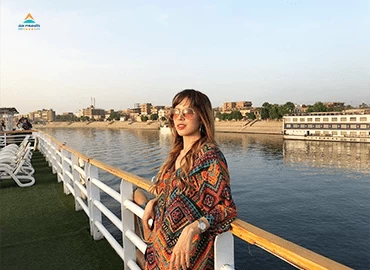













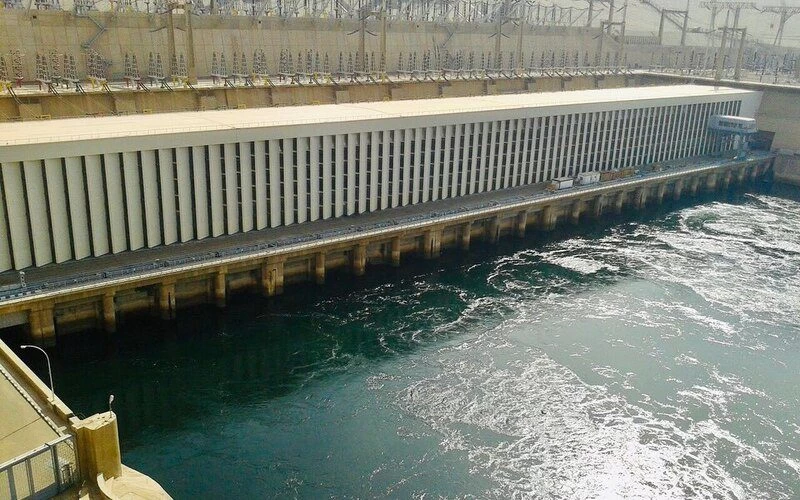














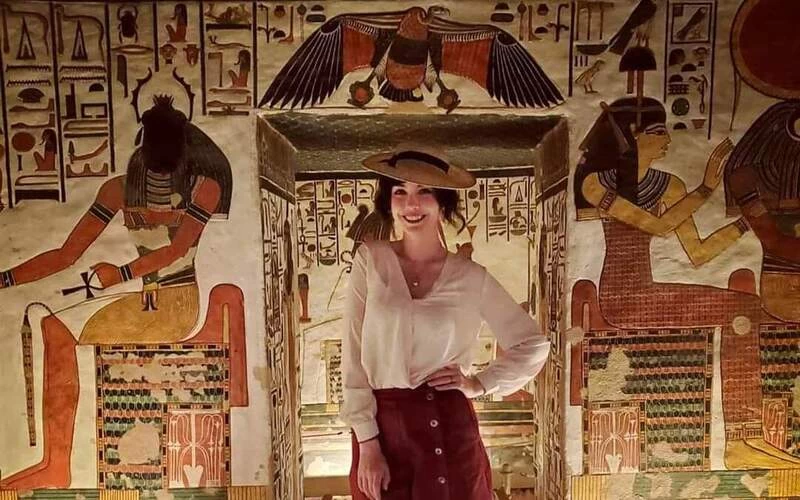
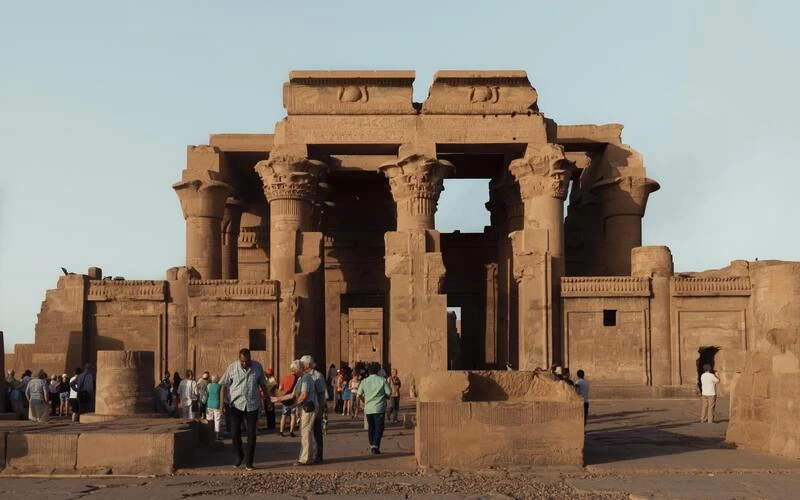
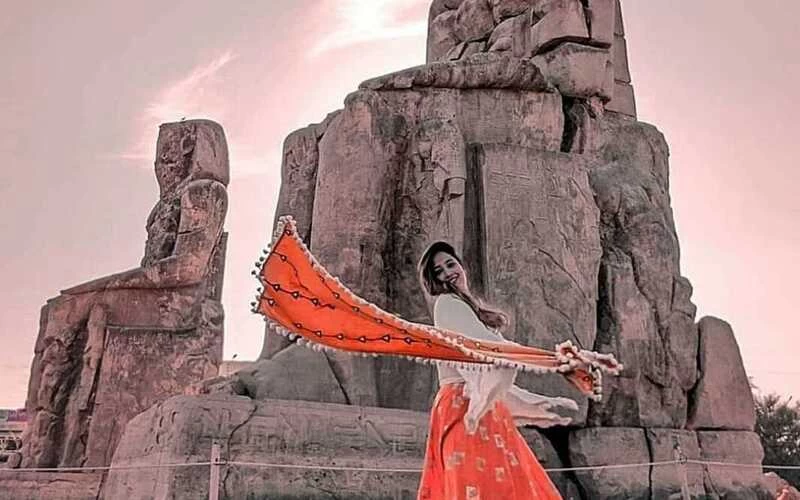









.webp)
.webp)
.webp)





